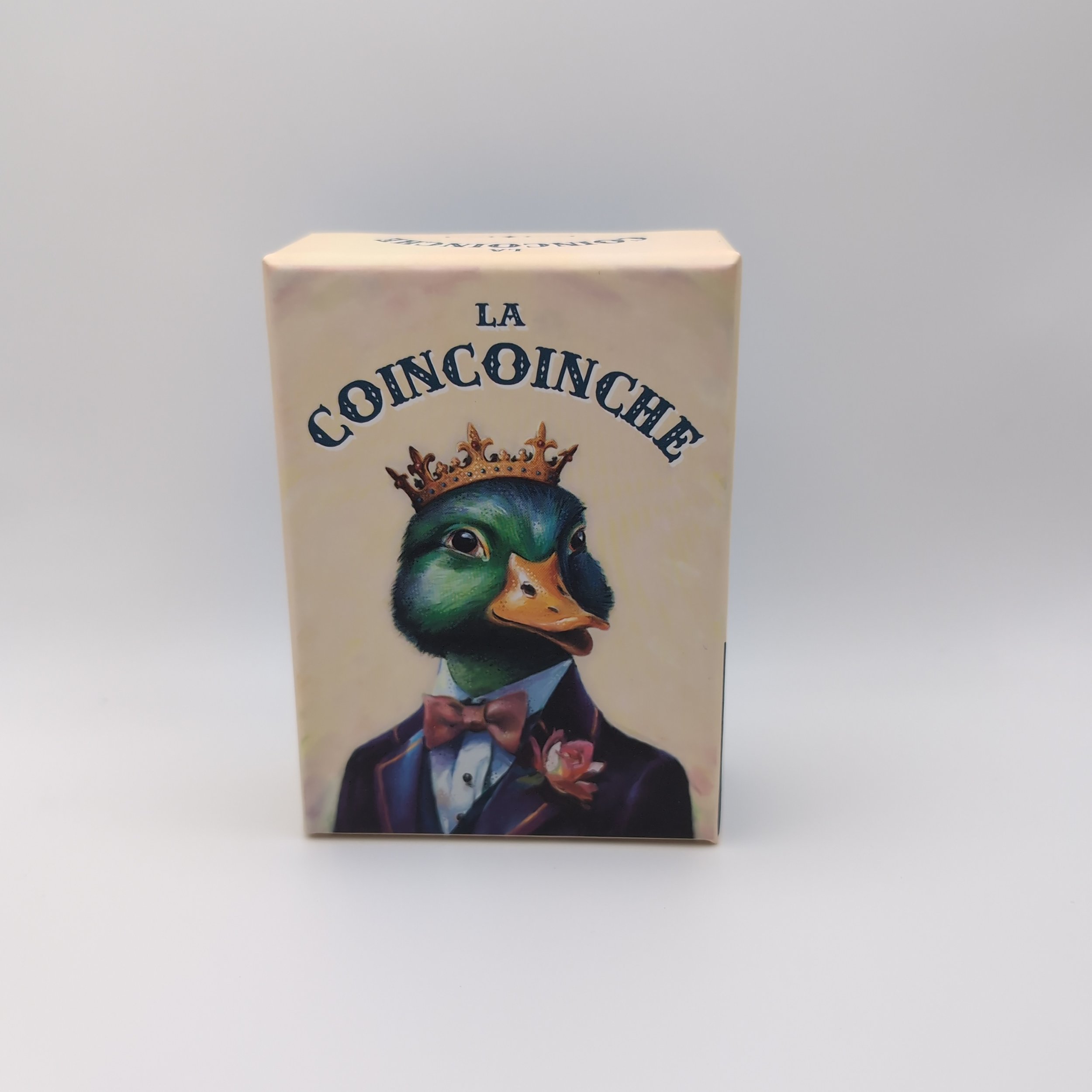 Image 1 of 1
Image 1 of 1


La Coincoinche (IMPORT)
Coincoinche is probably the most played game in France, essentially by adults (youngsters will probably play the "coinche" variant or Tarot during high school).
It has been known since around 1930 in France, and is played as a family game or as a gambling game (even if the latter has been prohibited in bistros).
A 32-card deck is needed (that means a poker deck without cards 2 – 6 and without jokers).
Coincoinche is a point-trick taking game for 4 players.
Players forms teams of 2. Partners sit at opposite seats.
The dealer gives everybody 3 cards face down, then 2.
After that, the first card of the deck is turned face up. Its suit will serve as trumps.
Then, each player announces whether they will take this card or not. If a player takes it, they receive the face-up card. Then the dealer deals 3 cards to everyone except the taker, who receives only two. That makes for 8 cards for everyone.
If no player takes the card, we take another round were each player announces if they take the card, but also announce the suit that will serve as trumps if they do (instead of the suit of the face-up card).
After that, it is similar to Tarot: First player plays a card, then each player can play a card of the same suit or a trump. If you can't play the led suit, you have to play a trump. If your partner wins the "pli" (trick), you don't have to play a trump.
When 8 "plis" have been played (when no one has cards in their hand), points are counted. The team with the most points win.
Coincoinche is probably the most played game in France, essentially by adults (youngsters will probably play the "coinche" variant or Tarot during high school).
It has been known since around 1930 in France, and is played as a family game or as a gambling game (even if the latter has been prohibited in bistros).
A 32-card deck is needed (that means a poker deck without cards 2 – 6 and without jokers).
Coincoinche is a point-trick taking game for 4 players.
Players forms teams of 2. Partners sit at opposite seats.
The dealer gives everybody 3 cards face down, then 2.
After that, the first card of the deck is turned face up. Its suit will serve as trumps.
Then, each player announces whether they will take this card or not. If a player takes it, they receive the face-up card. Then the dealer deals 3 cards to everyone except the taker, who receives only two. That makes for 8 cards for everyone.
If no player takes the card, we take another round were each player announces if they take the card, but also announce the suit that will serve as trumps if they do (instead of the suit of the face-up card).
After that, it is similar to Tarot: First player plays a card, then each player can play a card of the same suit or a trump. If you can't play the led suit, you have to play a trump. If your partner wins the "pli" (trick), you don't have to play a trump.
When 8 "plis" have been played (when no one has cards in their hand), points are counted. The team with the most points win.
